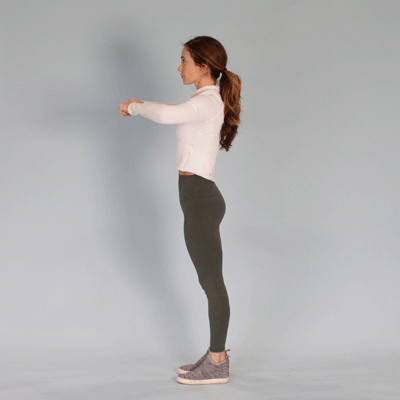Hindu squats originated in India, where Hindu wrestlers often used them in training routines. With both strength and gymnastic benefits, Hindu squats are a great addition to your workout routine, whether you’re a Hindu wrestler or not.
When performing any targeted strength training movement, proper technique is key to maximizing its benefits and avoiding injury. Keep reading to find out more about Hindu squats and how to do them right.

- Start standing with feet approximately shoulder-width apart. (Everyone’s squat stance varies a bit, so your legs may need to be a little wider than that.)
- Extend arms straight in front of you.
- Take a deep inhale and pull arms toward you as you begin to squat.
- Extend arms behind you as you reach full depth on your squat.
- Sweep arms past your legs and in front of you as you rise from your squat.
Pro tip: In a regular squat, you’d want to make sure your heels were firmly planted on the floor. But in a Hindu squat, you want your heels to be raised as you return to the standing position.
Hindu squats hit a sweet spot between coordination and strength training. If you find yourself without equipment, you can bang out 50–100 repetitions as an aerobic and strength workout.
Hindu squats are also a great warmup if you plan on lifting heavy with some loaded back or front squats.
Because your weight is focused on your toes as opposed to your heels in a conventional squat, Hindu squats will really work out your quads.
But those aren’t the only leg muscles they work. Hindu squats will also activate your:
Like most exercise moves, Hindu squats have an array of variations and comparable alternatives in case you want to put a slight twist on things. Here are a few.
Sumo squats
The squat equivalent to sumo deadlifts, sumo squats involve placing your legs wider than you would in a conventional squat. You can do these with your body weight, a kettlebell, a dumbbell, a barbell… really anything.
Like Hindu squats, sumo squats use a different leg position to focus the exercise on a different part of your leg muscles. Sumo squats will work your entire lower body, but they’re especially effective in working your glutes.
Goblet squats
Goblet squats will require a weight held in the center of your body. That can be anything, like a kettlebell, a dumbbell held vertically, or a medicine ball.
Because you’re holding weight, goblet squats can challenge you a little more without requiring as many reps as you’d do with a Hindu squat.
If you’ve already mastered some challenging variations on the bodyweight squat, like banded squats, but are still hesitant to start working with a barbell, goblet squats can be a great alternative.
Frog squats
Similar to Hindu squats, frog squats are a bodyweight movement that can be incredibly challenging yet rewarding.
To do a frog squat, stand with your feet slightly wider than shoulder-width apart and your hands in front of you in prayer position. Lower yourself into a squat while keeping your hips back. Then, lower your butt and hips almost into a frog-like crouching position while keeping your back straight.
A full rep is when you return your butt and hips to their original position. So, you’ll be moving your butt and hips up and down multiple times without coming to a full standing position until the exercise is over.
Think about this as a short pulsing movement — simple yet challenging.
While Hindu squats on their own aren’t bad for your knees, a couple of common form mistakes can leave the door open to injury.
- Wandering gaze. You want to make sure your gaze is neutral during the move. Keep your gaze forward and resist cranking your neck up or down to avoid strain.
- Exercising while injured. If you have knee issues or tight hip flexors, approach Hindu squats with caution. You may need to use a knee brace while you squat or modify the movement. You can modify Hindu squats by using a chair or box. As you would when doing a box squat, do the Hindu squat until your butt touches the chair or box.
Hindu squats are a simple yet effective way to add a lower-body burner to your workout routine. They definitely look a lot easier than they are, and they’ll give even the most advanced strength athlete a great workout.
Just be sure to maintain good form throughout and you should start to see benefits fairly quickly.

